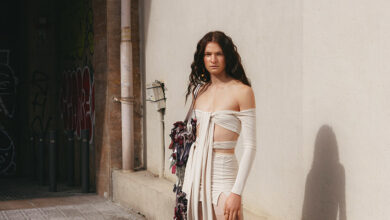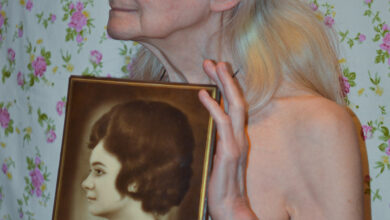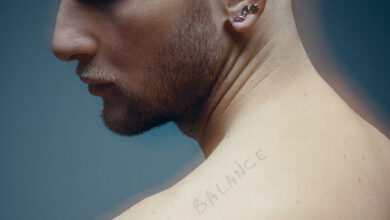By Michaela Doyle
Artwork by Nata Schepy
At the end of February this year, illustrator Nata Schepy was due to visit her hometown in Ukraine, Ivano-Frankivsk. She was looking forward to seeing her family and friends for the first time since moving to the Netherlands. Fortuitously, however, the pandemic interrupted yet another plan: her son and husband tested positive for Covid, forcing them to cancel their trip. That was just two days before Russia invaded Ukraine. Had they been able to get home, martial law would have required Nata’s husband to stay in the country, which would have left Nata with the impossible decision that millions of Ukrainians had to make: stay in a warzone with your loved ones or flee to safety without them.

It was a change in circumstances in 2016 that led Nata to connect with her passion as an illustrator. She had recently completed medical school and begun working as a junior doctor when a move to Hungary with her husband changed the course of her career. Given the language barrier, continuing to work in the medical field was not an option, but pursuing her art was a natural choice. Drawing and illustration was something she had always been interested in. Diverging from what could have been another life, it was these more creative endeavors that really clicked for her. Yet even now, you still can still see some vestiges of her medical training in her art: the attention to detail, the precision.
Today, she lives in Utrecht with her husband and her young son. She had only been there for a few months when everything changed.

Since the war started, Nata and her husband have been intimately experiencing the war from afar and helping in every way they can. Her husband’s parents are now staying with them in Utrecht since fleeing Ukraine, where they lived very close to a military base—a potential target. Every day, Nata speaks with her own parents, who have remained in western Ukraine. She is volunteering to help Ukrainian refugees in the Netherlands, including translating medical records for oncology patients and creating stickers for children missing their homes, and she is working to support the war efforts financially. In the midst of all this, she attempts to maintain some semblance of normalcy for her 18-month-old son.
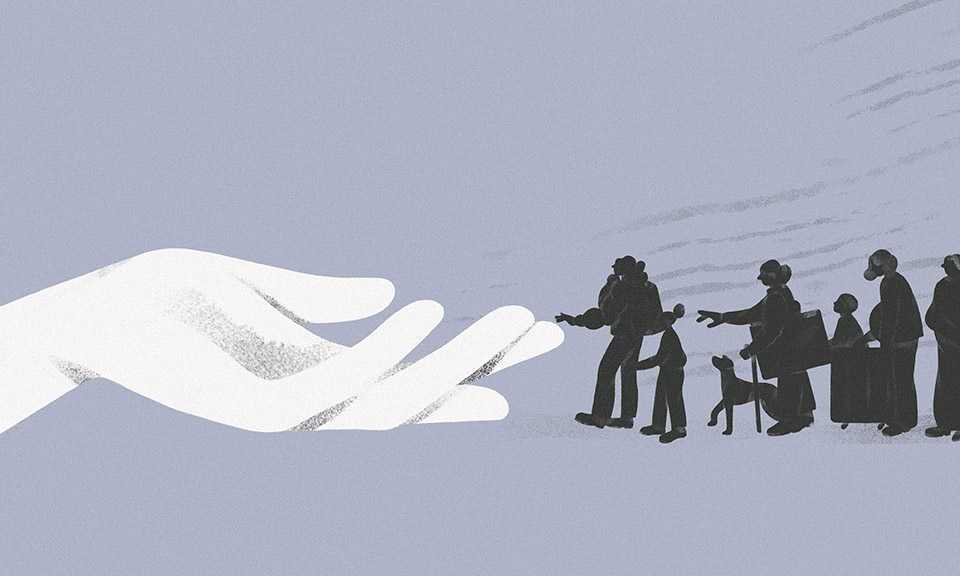
As it is for many Ukrainians living abroad, Nata has spent the past 11 weeks being pulled between myriad conflicting feelings. There is the desire to be on the ground with her family and friends, yet gratitude to be safe away from the fighting; the guilt that comes when watching those close to you endure devastation; stress from constantly scrolling the news feed; sadness for her people near and far, yet pride in their strength.

These conflicting feelings are quieted by her artistic process—and in some moments, they even feed her creativity. Creating in war is a separate endeavor from creating in normal times. For Nata, the main goal now in her work as an illustrator is to financially support the war efforts at home. Creating illustrations for her clients, where she is working within the parameters of a brief, comes more fluidly and is almost meditative; for a moment, she can exist in a pre-war mindset.

Letting her artistic mind wander at such a time can be overwhelming, yet she has created powerful illustrations inspired by her experience of the war. With her characteristic bold colors, crisp lines and evocative imagery, these pieces focus on the resilience and unity of her fellow Ukrainians and their will to overcome. “The only thing left now is to believe and fight, each on his own front…. After all, I believe more and more that this darkness will end, that light will overcome darkness. Because light is us, Ukrainians.”
Below are excerpts from Zoot’s conversation with Nata Schepy.
ZOOT Magazine: Can you tell me about your experience of the early days of the war? Where were you when it started? How has it affected your life and the lives of your family and friends?
Nata Schepy: A day or two before February 24, we were planning a trip to Ukraine, but my husband and son got positive on Covid, so we stayed in the Netherlands. On February 24, my husband woke me up with the words “War has begun in Ukraine.” My first emotion was fear, my heart was beating so loudly as if it was about to jump out of my chest. The fear that all my relatives and friends are in Ukraine. And we are not there. It is the fear of losing everything at a distance. My hometown, Ivano-Frankivsk, in western Ukraine, was bombed on the first day of the war. The rockets fell close to my husband’s parents’ house. They woke up to the sound of explosions. These first days were a continuous panic for me. It was a feeling of helplessness.

How does it feel to be in the Netherlands right now, away from home? What does your community look and feel like for you now?
NS: I am grateful that we are safe. I am grateful that my son does not hear the explosions, and that we don’t run to the shelter several times a day. I’m grateful that we are not worried about our lives. But at the same time, we are worried about the lives of our loved ones. We talk to our parents and our friends several times a day, and the question “How are you?” has already acquired a different meaning. “Did you hear the siren? Did you manage to hide?” I want to support them so much and say that everything will be fine. But there is no guarantee that this will happen. The only thing left now is to believe and fight, each on his own front. To volunteer, to help financially, emotionally, and informationally. After all, I believe more and more that this darkness will end, that light will overcome darkness. Because light is us, Ukrainians.

What has changed in your life since 24 February?
NS: We lost our calmness. It is impossible to live your previous life knowing that there is a war in your homeland. I always have dissonance when I walk in my city in the Netherlands, where everyone is so calm, at peace, and happy and my thoughts are constantly occupied by the latest news in Ukraine.
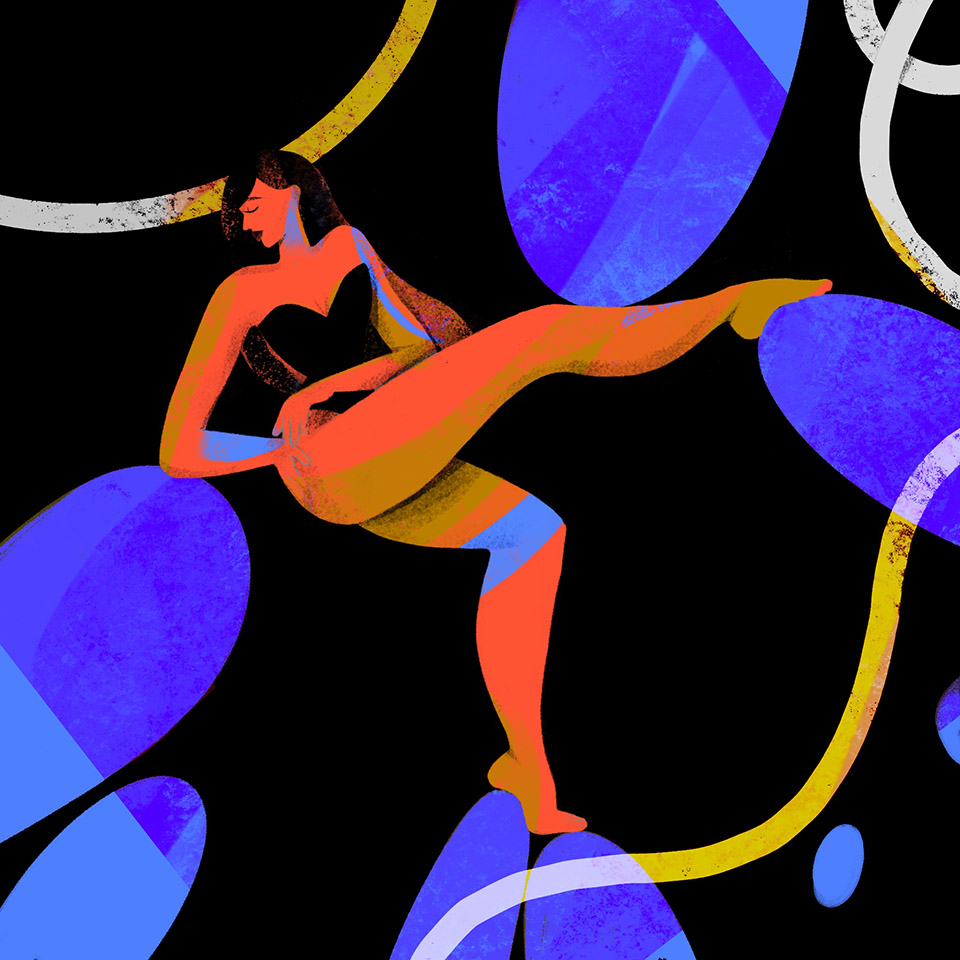
What has been the scariest moment for you so far?
NS: The worst thing is to read the news about the explosions in my hometown. Calling to my parents with no answers. And then calling non-stop until I hear my native “Hello, we are ok.” The worst is the few minutes of uncertainty.
People outside of Ukraine have been surprised by how passionately President Zelenskiy is defending and leading the country in the midst of the violence. Was there any moment you were surprised by your country?
NS: In peacetime, I saw President Zelenskiy primarily as a great manager, who little by little tried to make positive changes for the country. Now I consider him the best president. The war has shown how strong, courageous and motivated he is. I have no idea in what difficult conditions he has to work, to make decisions that can be decisive for the fate of our country. But I trust him, and I trust his team. We have a common goal and that makes us unbreakable.

All Ukrainians have a unique experience of the war depending on location, family situation, etc. In your view, what ties all your experiences together?
NS: Ukrainians are united by a common idea. We defend our land, our people, our values, and our freedom. It is possible to destroy buildings or bridges, but it’s impossible to break our unity, it’s forever.
What’s your daily routine like now?
NS: Until recently, my phone didn’t go blank from the news, and I reread each one the second it appeared. Now I try to limit the time of news, otherwise, I will be exhausted, stressed, crying, and tired all day. I can’t afford it, I can’t bring myself to the same psycho-emotional state as the people directly affected by the war. I am a mother and I must first of all take care of my son and have the resources to work so that I can help my native country financially. And having enough resources to be emotionally supportive of loved ones. This is my role.

Can you tell me about the illustrations and other work you have been doing since the war started? How is the war and your experience so far showing up in your work, art and general creative expression?
NS: Since the beginning of the war, I feel the need to be useful in the field in which I work – illustration. It’s difficult for me personally to draw in such an emotionally difficult period. However, I have created some illustrations about the war, some of which will be or are already in galleries (Polish Printing House Drukomat or Latvian Hungry Eyes); all proceeds will go to support refugees or for humanitarian aid. Also, one of the illustrations is now available for purchase in the form of posters on the Danish website Hvass&Hannibal, along with illustrations by two other Ukrainian illustrators, and the proceeds also go to support people who fled Ukraine. And just recently I received a collaboration offer from a volunteer friend from Ukraine who lives in Amsterdam. She organized the delivery of Ukrainian children’s books to one of Amsterdam’s libraries so that children who left Ukraine could find a book in their native language here. And I had a chance to create stickers that are added to each book to cheer up the kids a little bit.

Also, in the first week of the war, I came up with the idea to create postcards for my neighbors. I used one of my illustrations for the cover, and on the back, I wrote a message with information about what is happening in Ukraine and how each can help. Our neighbors are very caring and many of them did respond, and it turned out that one of the neighbors is a co-owner of our house. In response to the postcard, she offered not to pay rent for the apartment in April, and use the money to help Ukraine. That was priceless. I am grateful to everyone who helps, supports donates, and is just here and ready to listen and talk.

Who, or what, is inspiring you these days?
NS: Earlier, before the pandemic and the war, I was inspired by travel. Not something concrete, but, so to speak, a short-term change of life and the opportunity to break out of my (dis) comfort. For me, the period of life (5 years) in Hungary was isolation, isolation from life and the world, from friends and relatives. That’s why I traveled so often. Each such experience in another country gave a strong motivation and inspiration and there was a mad thirst for work.

Now, with inspiration, it’s getting harder, and, while answering your question, I realized that my level of inspiration is close to 0. The only thing that saves my performance is super tight deadlines when the brain turns 200% and creates the impossible. This is my type of addiction, working under pressure. Maybe it’s an echo of a previous life related to medicine?
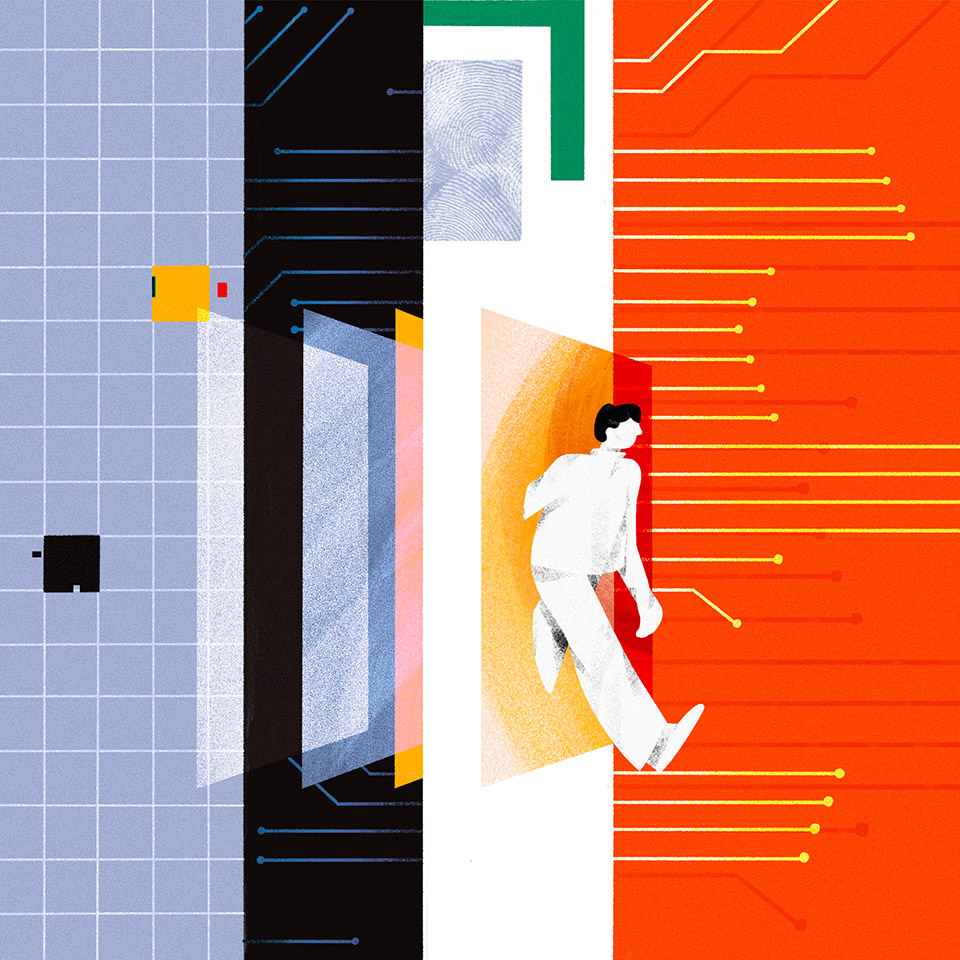
And if we talk about artists who inspire – in each period of the creative path they are always different people. Depending on the emotional state, someone’s work can touch the heart. Now it is the work of Ukrainian illustrators and artists – mostly Sergiy Maidukov, Masha Foya, Mari Kinovych, and Julia Tveritina.
Do you know other designers or artists who are still in Ukraine, fighting or volunteering? What are their lives like now? What about creatives you know outside Ukraine, how are they spending their days?
NS: Many artists and illustrators had to leave their homes. Some left the country, and some found a temporary home in another part of Ukraine. Everyone lives this period differently: someone takes up arms because he sees no other role than to protect his land, someone picks up a graphic tablet and illustrates all the events in his/her work. All (without exaggeration) of my creative friends and fellow artists are volunteers. Everyone puts their illustrations and paintings up for sale and donates all or part of the earned money to the army or humanitarian aid. Now, in fact, there is no right way, everyone is a fighter on his front.

What do you think the international artistic community can do to help the Ukrainian people? How can we all help?
NS: I believe that it is worth supporting Ukrainian artists and illustrators, offering them work, participation in projects, and collaborations. This way we will be able to help Ukraine more financially. It is important to remember that the war is still going on in Ukraine and you can’t get used to it. It is important to talk about it out loud, to show it in your work. In this way, we will be able to reach people who have political influence, those who can provide enough support to Ukraine to end this war.
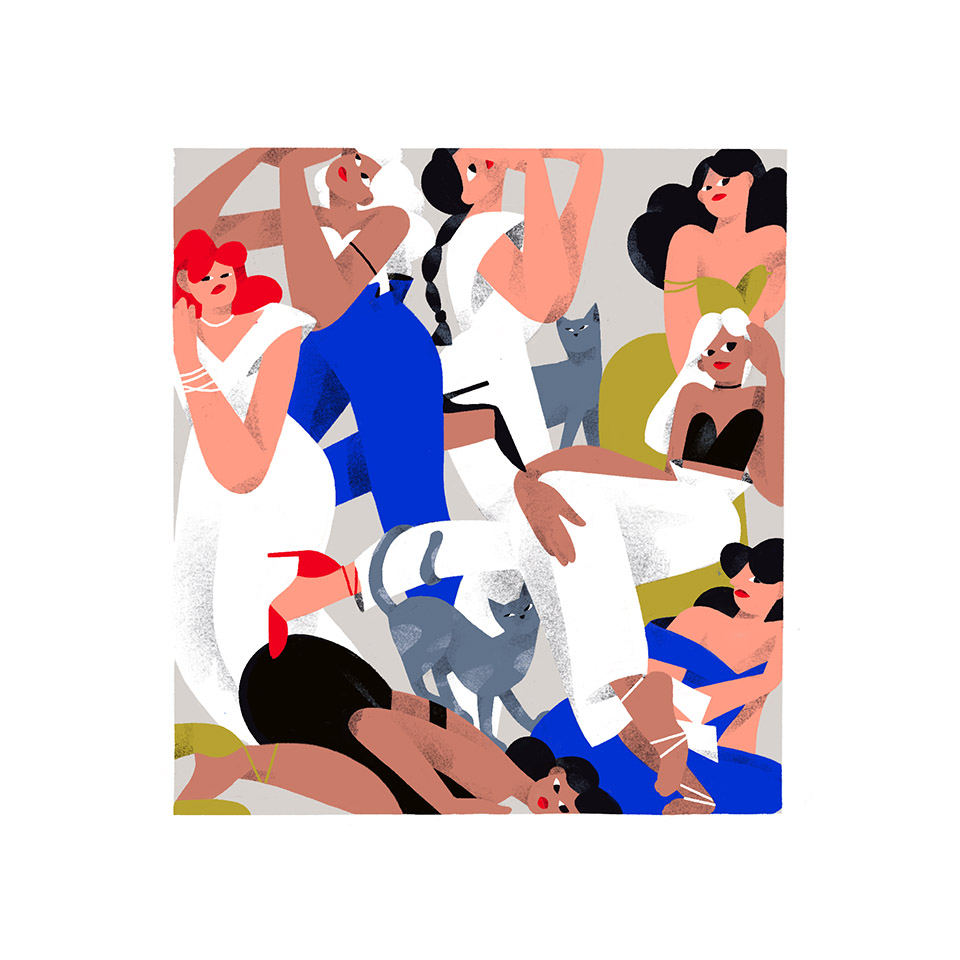
What do you imagine your life will be like when the war is over? What’s the first thing you will do then?
NS: I will definitely go to Ukraine, to my parents and eat my mom’s varenyky (the best ones in the whole world). But if talking more globally, the end of the war does not mean the end of all the horror that the Russians have brought to my country. After the end of the war, the reconstruction will begin. And I will definitely help as much as I can.




